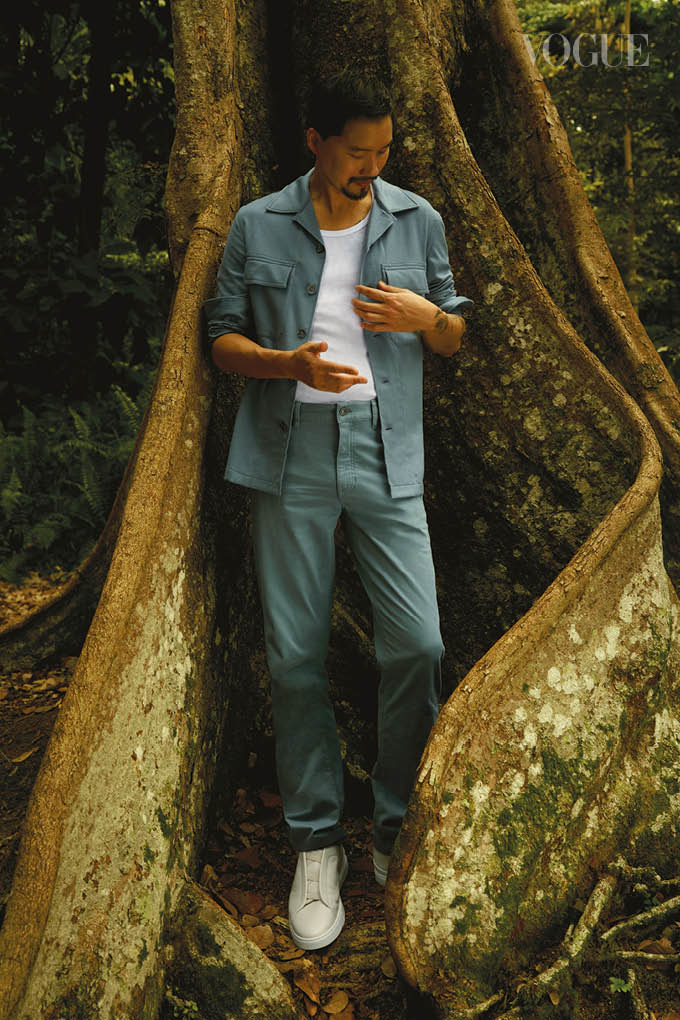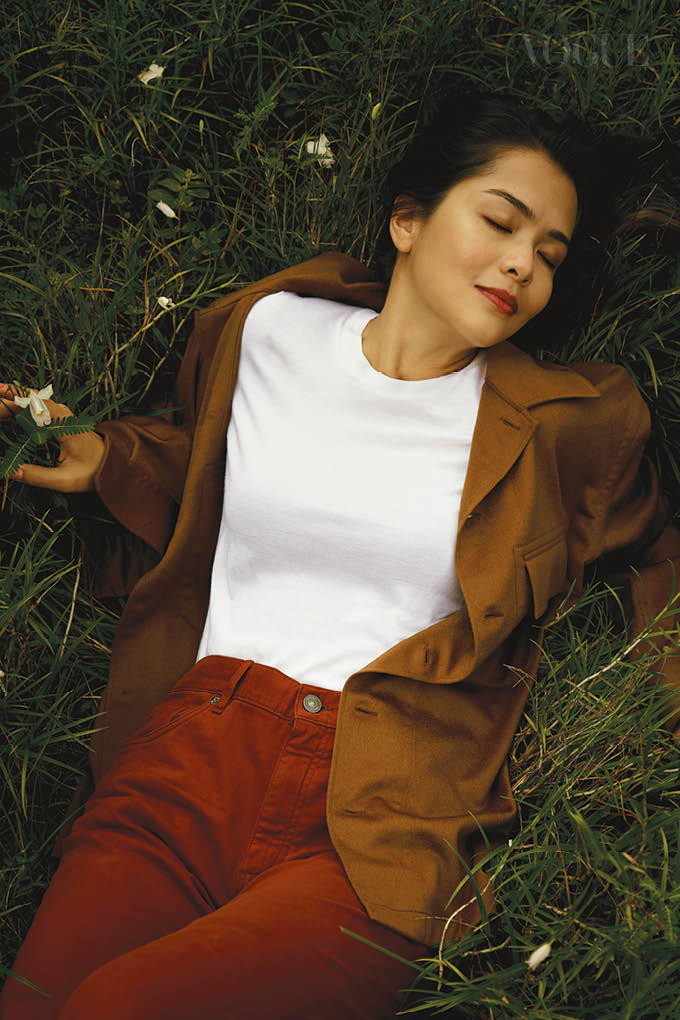When it comes to sustainability, the most—well, sustainable—of efforts are the ones that allow us to enjoy the things we love while mitigating our impact on the environment. Take cashmere, for example. It is a coveted, luxurious material and ranks high on the biodegradability scale. It is also a renewable resource if standards of production are maintained well. Zegna’s new Oasi Cashmere collection is born in Oasi Zegna, a free-access nature reserve built by the brand’s founder in the scenic Biellese Alps of Piedmont. Manufactured in Italy, the luxury menswear powerhouse has pledged that all cashmere fibres used in the collection will be certified traceable by 2024.
Closer to home, food security is a hot-button ecological issue most Singaporeans are intimately acquainted with—we are a small nation with limited natural resources. What many may not recognise, however, is just how closely our diets are tied to sustainable living. To investigate all the ways in which the journey from farm to plate can affect the health of the planet, Vogue speaks to two green-living pioneers in Singapore on what they are doing to make a difference.
Bjorn Low, co-founder and executive director at Edible Garden City
Corporate-turned-farmer Bjorn Low named his social enterprise after his home town—more specifically, the ‘garden city’ label Singapore has earned for the manicured shrubbery it is dotted with. Consider the name a tongue-in-cheek private joke, for despite our ubiquitous greenery and abundant wealth, 10 percent of households in Singapore struggle with some form of food insecurity.

“Yet, we throw away several hundred tonnes of food a year,” Low shares. “Clearly, there are inequities in our food systems that need to be addressed.” For over a decade now, Low and his team at Edible Garden City have been championing the grow-your-own-food movement in Singapore. Their work began with planting produce and herb gardens for restaurants around the island, the first of which took root in Bjorn Shen’s experimental Middle Eastern venture Artichoke.
Building a garden, quaint as it sounds, is quite an undertaking. It requires a range of skill sets (from architects to engineers) and hours of work under the hot sun. Still, for Low, the task is well worth the effort. “Each time we build a garden, the value doesn’t come merely from the crops that we grow. What is important is how these gardens are able to engage people who, for the last 20 years, have been detached from farming and agriculture.”
“Gardens are able to engage the community in Singapore, which has been very much detached from farming and agriculture”
Low has a Rolodex of agriculture-related facts at his disposal. One of the more alarming ones he pulls out is that in the past 70 years, we have had three major global food crises that have debilitated several countries around the world. “Each time, the same solutions come up. ‘Let’s increase industrial production, let’s specialise’, which seem to alleviate the problem for a short while. But then, the cycle repeats.”
To bring our attention back to how we grow our food is a key part of the answer, says Low. The rest? He asserts: “Ideally, there needs to be a new way to model food systems. The global food sovereignty movement is growing and urban farming is part of that. Singapore is a young nation and has barely started looking at indigenous food practices from the past. These topics will hopefully garner more interest in the future and the knowledge we gain can help us make better decisions with urban planning, allowing us to build resiliency into our landscape. Then, our ‘garden city’ will become an ‘edible garden city’.”

Charlotte Mei de Drouas, nutritionist and environmental advocate
“I don’t want to be too ‘woo-woo’,” Charlotte Mei de Drouas laughs wryly, “but I feel that we owe a debt to Mother Nature. It’s our responsibility to be mindful of our impact.” With her disarming disposition, de Drouas is a near-perfect archetype of the climate-conscious social media influencer who showcases her green lifestyle (metal straws in tow) on Instagram. And while she may have the follower count to match, she also has a host of credentials that set her apart.
A nutritionist by training, de Drouas’s social media content is in line with her personal philosophy: to nurture our health alongside the planet’s. From running workshops on food composting—”I eat lots of fruits and vegetables and am left with tons of cuts and peels. It got me thinking, when I throw this in the bin, where does it end up?”—to educating her followers about foods that are sustainable yet nutritious—”Seaweed, mushrooms and mussels. Who knew?”, de Drouas builds her online presence around informative but entertaining content. Call it infotainment, if you will.

It may not be hard numbers or science, but content like de Drouas’s plays a pivotal role in planting the initial seed of curiosity in the viewer’s mind. Her brightly coloured, easy-to-engage-with posts are approachable, and yet highly useful, for the layperson who may know that diet has something to do with sustainability, but is not quite sure where to start. “Health and sustainability are naggy topics by nature. My role is to find a way to disseminate these messages in a palatable manner,” de Drouas shares. “I don’t believe in imposing the way I think or act on other people, even my own following. I find that modelling good behaviour is a more impactful way of empowering someone to build their own positive habits.”
When it comes to saving the planet, openly living a greener lifestyle in hopes that the people she influences will take it up is a key part of how de Drouas hopes to make a difference. Her other tactic lies in keeping companies and governing bodies accountable by voting with her dollar. “Environmentalism is an arena in which everyone has a part to play—individuals, corporations and governments. Consumers forget sometimes that they have a voice and can make it known what they want and don’t want. Companies understand consumer demand, and it’s up to anyone with a bigger platform to speak louder and make sure our concerns are heard.”
Photographer Eric Seow
Hair and make-up Greg O using Clé de Peau Beauté and Keune
Photographer’s assistant Alfred Ng
Stylist’s assistant Jiajia Tan
Find out more about Zegna’s Oasi Cashmere Collection at zegna.com






